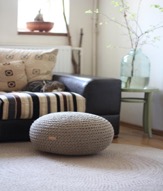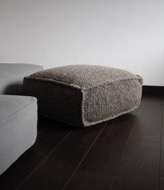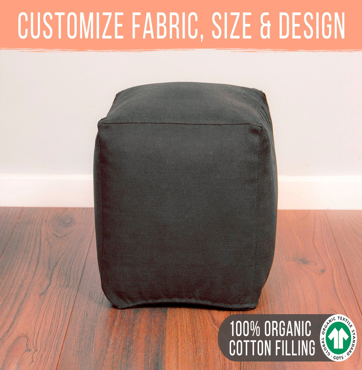
Submitted questions will be posted with my response by the following Tuesday or before.
Submitted comments will be moderated and approved within 24 hours.
Denim Jeans
Question from Bonnie
Thanks for the recent coverage on non toxic clothing. It was helpful. Just wondering if anyone has been able to find denim jeans ?
Lisa’s Answer
Rawganique has organic cotton and hemp jeans. They seam to be discontinuing many styles so act fast!
Styrofoam
Question from Judy
More on styrofoam please. I have orchids on windowsills that are terrazzo and very cold in the winter. I’ve put styrofoam boards from a craft store on top for their protection. Should I be worrying about this particular application?
Lisa’s Answer
The more significant health concern about styrofoam is that it can leach styrene, a probable carcinogen, into food and beverages when it is used as a container. There is probably not a significant exposure from this application.
I try avoid styrofoam, in general, because it is particularly bad for the environment due to a chemically-intensive manufacturing process and its inability to break down when it is disposed.
Air Purifier for MCS- no carbon
Question from NIT
I’ve tried two air purifiers and they unfortunately exacerbate my symptoms, particularly in the sinuses.
I believe the problem is the carbon. I get similar symptoms when using a nose filter with carbon in it.
Are there are any alternative air purifiers which can remove formaldehyde and other VOCs which may not trigger me?
Lisa’s Answer
EnviroKlenz does not use any carbon. Everyone is different so I can’t tell you what will or will not trigger you. If you use the search button on the site, search for air purifiers and you will find threads where readers with MCS comment on what has and has not worked for them.
You can also read my Portable Air Purifier Buying Guide.
Yeast-Like Smell from Air Purifiers
Question from JP
My doctor prescribed an Austin Air for my MCS in 2005. It emitted a yeast-like smell, but I thought it was normal. Then, I purchased a smaller Austin Air and the air was mega fresh. I could tell instantly when I shut it off for a few hours and then turned it back on. So, I ordered another one, plus a filter for my original unit. Every single one them are now emitting a yeast-like smell. So, I purchased a Dyson air purifier and it worked like a charm, so I purchased another one. Every Dyson filter I have order in the past two years emit the same yeast-like smell. Has anyone ever complained about yeast-like smells? I’m wondering if that means the filters are old and have been sitting on the shelf for too long? I recently ordered an EnviroKlenz purifier and it emitted a strong odor and now it seems to be fine. I put it in my garage because I have a piece of new furniture that is off gassing, and the purifier is not helping. I’ve spent thousands of dollars and I’m losing hope. 🙁 Any suggestions or ideas?
Lisa’s Answer
Readers, has anyone else had this experience? Any suggestions?
You can read more about air purifiers in my Portable Air Purifier Buying Guide.
Chantal Induction 21 Cookware
Question from Chris
I see that Chantal cookware is on the list of recommended products. I have read concerns about ceramic coating in numerous sources. What are your thoughts on the safety of Chantal’s Induction 21 cookware with ceramic coating?
Lisa’s Answer
I agree that new research has shown that ceramic-enameled coatings can leach nanoparticles. I will remove Chantal from Debra’s List.
Vinyl Plank Flooring
Question from Janett
Hello. We have been looking at vinyl plank flooring . Home Depot carries a brand called Lifeproof that has the Floorscore stamp on it. I read on this site that Floorscore doesn’t test for everything that is dangerous.
We are also looked at Homecrest Cascade and Coretec Plus. Homecrest has a product safety assurance statement on their web site of what chemical are not in them.
Do you know anything about either of these products by chance? We definitely need waterproof.
Lisa’s Answer
Check out The Green Design Center. The owner, Andrew Pace, tests the products he sells and has found formaldehyde emissions from products that claim to be formaldehyde-free. Cali LVP flooring is the only LVP brand he sells.
Mattress Options for a Toddler
Question from Liz
I’ve been agonizing over what type of twin mattress to purchase for my 3.5 year old. I was set on buying an all natural mattress with organic cotton and latex components. However, I’ve been reading that many people have had issues with all natural materials developing mold. With a young child who is going to wet the bed (potty training at night), mold is a big concern to me, even with a waterproof pad. I can’t decide what the lesser of the two evils is – the potential for mold, or a polyurethane mattress (flame retardant free). Help!
Lisa’s Answer
Naturepedic 2-in-1 kid’s mattress is your best bet. One side has a food-grade waterproof coating made from sugarcane. I have not heard of any mold issues with these mattresses.
Styrofoam Sheets
Question from Hope
I love your site…as I appreciate your info so much…I’ve been through a lot with chemicals ~yikes!
I have a question, do you know of a “toxic-free” styrofoam sheet product/company that is available in the market? I need it for a major project. I need to buy in sheets, but everything I have found so far seems to have fire retardant and other chemicals added. Do you have a suggestion?
Lisa’s Answer
I am not aware of any, readers?
I try to avoid all styrofoam. Using it in a project is probably not a significant exposure but it can leach styrene into food and drink. Also, it is terrible for the environment due to it’s chemically-intensive production process and inability to bio-degrade.
See How I Search for a Non-Toxic Footstool
I’m in the market for a non-toxic footstool for my husband. He has a chair that he uses in a quiet corner of our house and would like to be able to put his feet up. Since it’s not in a main room of our house, I’m not looking for investment-quality furniture but I would like it to look nice and be built to last.
I thought it might be interesting to show the steps I take and thought process I go through before I buy a new product for my home.
Identify a Trusted Source
A quick search of my go-to, non-toxic furniture makers, Medley and Cisco Brothers, confirmed my suspicion that all of their options would cost far more than I wanted to spend. So, I went to another favorite source; Etsy.
I really like buying from Etsy for many reasons. I like to support small businesses, particularly those that are women-owned, and handmade goods are generally environmentally-friendly. Most importantly, Etsy sells many products made with natural materials and the artisans are often willing to customize when materials are not optimal.
Eliminate Problematic Materials
I chose to steer away from stools with wooden legs because it eliminates the need to evaluate adhesives and stains, each of which are potentially toxic. I also chose to avoid leather because even vegetable-tanned leather can be processed with harmful chemicals. This led me to focus on stuffed cushions or poufs to serve as a footrest.
Evaluate the Materials
Most Etsy shops do a good job of identifying the materials used in each item. The more detail that the artisan provides, the more comfortable I feel that I can adequately assess the product. I look for natural fabrics and fills and then make note of questions I have for the artisan.
I assumed that many of the items I looked at have a zipper so that the cover can be washed, but most didn’t list this as a material. Though zippers are made of plastic, it is a minor exposure and I am not worried about it.
Look for Certifications
When purchasing fabric, it is optimal to find products certified by GOTS or Oeko-Tex. Read more about certifications here.
Contact the Producer
I always like to verify the materials with the artisan and confirm that there is nothing else used in the product.
For fabrics, it’s important to know what types of dyes are used and if they have any treatments, like stain resistance. This is often not specified in the description.
I also ask for verification of organic claims and certifications.
Finally, I ask about the ability to customize if there is a material that I would like to substitute for something less toxic.
My Search
I started by searching for organic poufs. Adding the word “organic” to the search helps to identify products that attempt to use more natural materials. It is a good filter but does not guarantee that the finished product is organic. I found dozens of options and narrowed down my choice to three items. Each have pros and cons.
Option 1:
Materials:
- Crochet part: natural linen cord
- Filling bag: natural linen fabric
- Filling: Styrofoam beads.
- Linen is not beached, no dyes used, 100 % pure Baltic linen
My Evaluation:
- The fabric for both the inner and outer fabric is undyed linen.It’s not certified organic but flax (which is used to make linen) requires little to no pesticides and can be mechanically processed into linen fabric with few chemicals. Some cheaper linen can be processed with chemicals so I’ve reached out to the artisan to confirm that the linen is mechanically processed and to see if it has any certifications.
- I love that it is undyed because the dying process can be chemically intensive.
- Styrofoam beads are not something I would buy. Read more here about Styrofoam. I confirmed that it is possible to buy this unfilled. I would fill it with this GOTS certified organic cotton fill.
Option 2:
Materials:
- Exterior: 100% organic wool
- Interior: Organic linen
- Stuffed with high quality polystyrene beads
My Evaluation:
- I love that the wool and linen are organic. I have asked for confirmation of organic certification and also inquired about the dyes. They look to be undyed but I want to be sure.
- Polystyrene is the same things as Styrofoam. Styrofoam is a trademarked brand name for polystyrene. I would not buy this. I have asked the artisan if I can buy the cover without any filling.
Option 3:
Materials:
- Filling: 100% Organic GOTS Certified Cotton
- Insert Cover Fabric: 100% Cotton, lightweight
- Zip-Off Cover Fabric:
-
-
-
-
-
-
-
-
-
- Max Cotton (100% Cotton)
- Canal (60% cotton/40% polyester)
- Mimos (50 % Cotton/50% Polyester)
- Bella (67% Cotton/33% Linen)
- Velvet (65% cotton/35% Polyester)
- Water/ Stain repellent fabric (60% Cotton/40% Polyester)
-
-
-
-
-
-
-
-
-
My Evaluation:
- This is the only option I found that has a GOTS certified fill. This is ideal.
- The insert cover is 100% cotton. There is no information about dyes or certifications.
- The outer cover is available in many options, including synthetic fabrics and stain repellent treatments. This raises concerns about the 100% cotton fabric. Most cotton fabric is dyed and processed using harsh chemicals. It seems unlikely that this cotton is organic or certified.
- Interestingly, this option has the best fill but the most questionable outer fabric.
While I am still waiting to get some answers from the artisans, I am leaning toward option 2, assuming I can supply my fill and the wool and linen are undyed. If I can’t confirm the type of dye used on the wool, I will go with option 1 and use my own fill. Either will be non-toxic and will get the job done beautifully!
PVC-Free Adhesive Cord Cover
Question from Melissa
I’m having trouble finding PVC-free adhesive cord covers to cover my long ethernet cables in the house. Optimally they are like these ones, but PVC-free:
https://www.amazon.com/gp/product/B07KFP5SJ8/ref=ox_sc_saved_title_1?smid=AIVUHJ2NABNJF&psc=1
Lisa’s Answer
All of the plastic covers that I found were PVC. Would you consider a fabric cover? It would be safer to avoid the adhesive as well.
Etsy has many fabric cord covers including ones made from natural fibers. These are made from linen.
I have a magnetic strip on the back of my desk and I organize my wires with metal clips.










